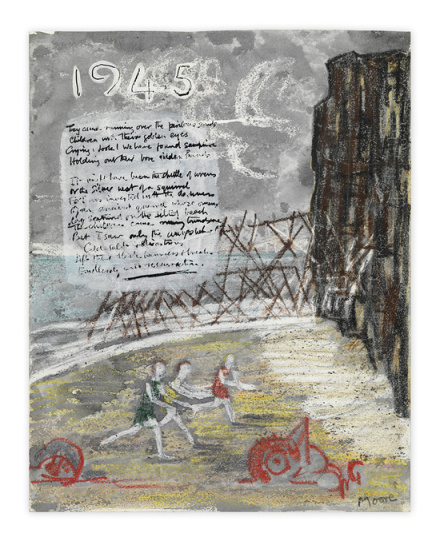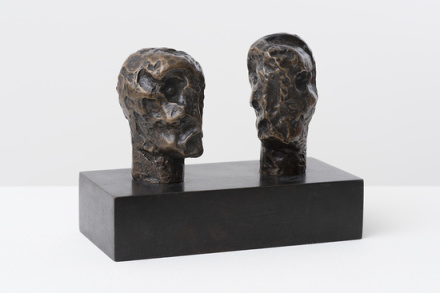
Henry Moore, Warrior with Shield (1953—1954), all images courtesy Hauser & Wirth
Taking a historically nuanced approach towards the vastly influential career of British sculptor Henry Moore, Hauser & Wirth is currently presenting an exhibition of early works on paper by the artist. Exploring the artist’s graphic practice in the years directly following the end of WWII, the exhibition traces Moore’s ongoing engagement with the world of literature, and his engagement with the broader artistic spheres as he continued to hone and develop his practice. Organized by the Henry Moore Foundation and curated by the artist’s daughter, Mary, the exhibition traces Moore’s impressive creative spirit, and the ever-shifting craft of an artist continuing to work through wartime.

Henry Moore, Stonehenge (1972)
Moving away from London and its frequent bombing raids during the war, Moore would settle for several years in Hertfordshire, where he found himself without many of his usual implements. Refusing to halt his practice, however, the artist would turn to drawings and etchings as a way to continue his work, including an ambitious project providing lithographs and typography for Prométheé – André Gide’s adaptation of Goethe’s Prometheus. These works, accompanied by a series of early sketchbooks and correspondence with writers W. H. Auden and Herbert Read, trace Moore’s fascination and inspiration from the written word, translating and embellishing texts in his time away from London.

Henry Moore, Recto: Prometheus and His Statues, Verso: Statue of a Young Girl (1949—1950)
Also of note, however, are a series of drawings by the artist in which he continued to push his conceptual grounding for later sculptures, exploring increasingly complex forms and curving lines that would ultimately inform his practice int the years following his return to the British capital. It’s an interesting conversation, particularly in consideration of each work’s frequent proximity and reinterpretation of the texts and letters near them. In one work in particular, a cover design for Contemporary Poetry and Prose, the artist’s loping hand and intersecting words ultimately turns the written word into a sculptural element, one that underscores the lyrical minimalism of some of his smaller sculptures on view, including a series of maquettes and table top works. These pieces, each time moving closer to Moore’s famed style, feel particularly engaged with the narrative and textual elements around them, both in their application of heroic subject matter, and their increasingly fluid renderings.

Henry Moore, Illustration for a Poem by Herbert Read (1946)
Moore’s work here is a fascinating entry in his long and storied career, tracing a moment at which, hampering by the extraordinary conditions around him, his imagination was forced into a new medium, only to see the artist’s continue to reshape and reinvent the possibilities for his chosen form, even through a suspended, abstracted route. Moving through the imagined landscapes of the written word, Moore’s work here sees an artist finding renewed inspiration from new worlds accessed through the printed page. The exhibition is on view through March 11th.

Henry Moore, Emperors’ Heads (1961/1967)

Henry Moore, Cover Design for Contemporary Poetry and Prose (1937)
— D. Creahan
Read more:
Henry Moore: Myths and Poetry [Exhibition Site]



